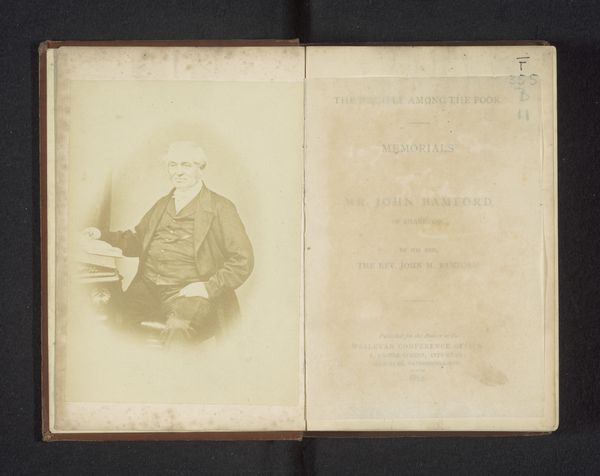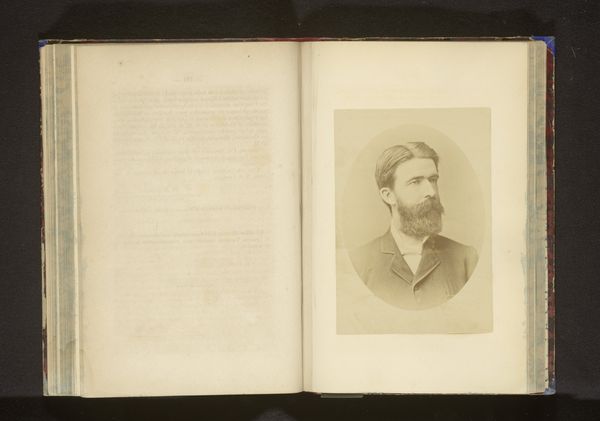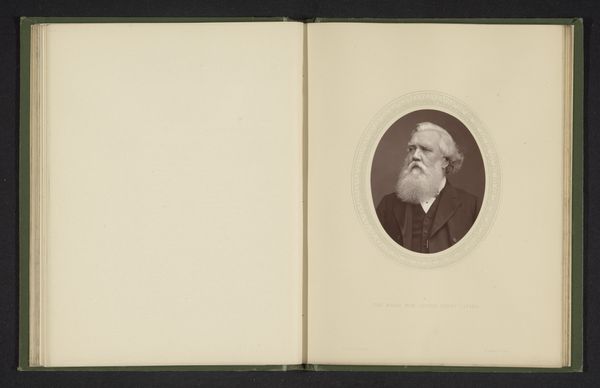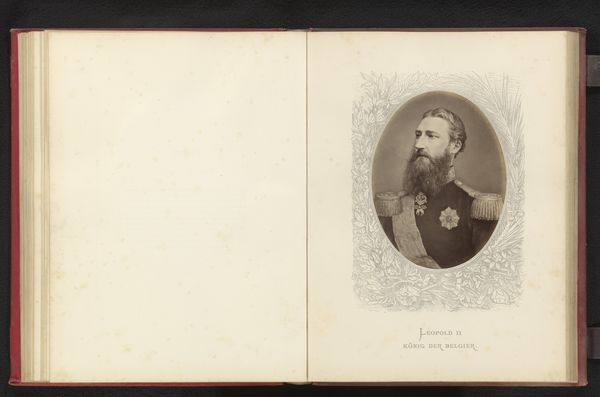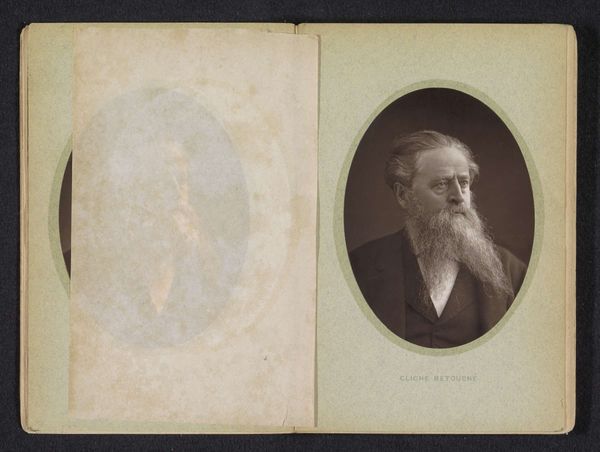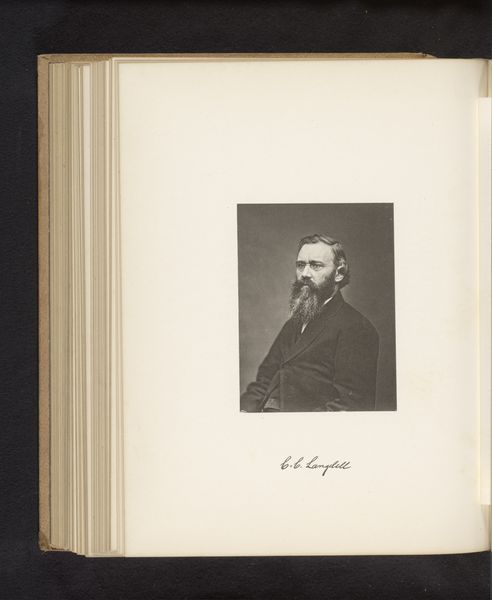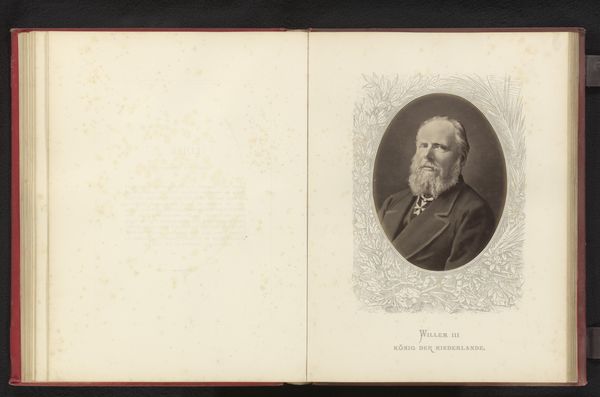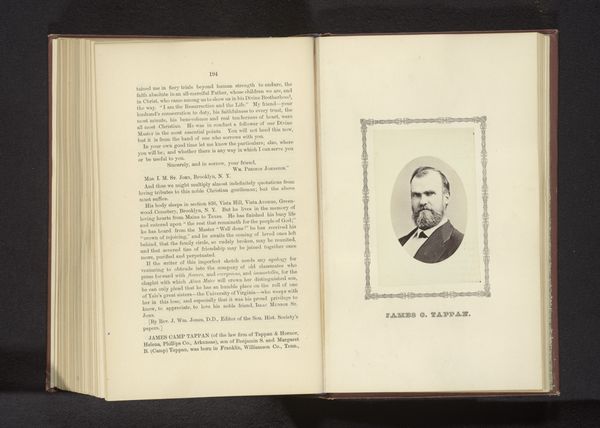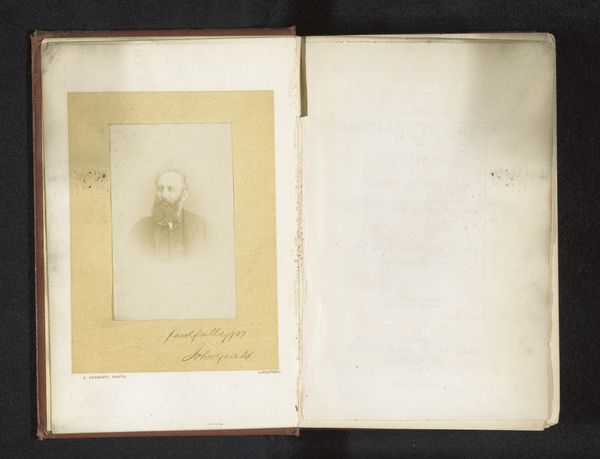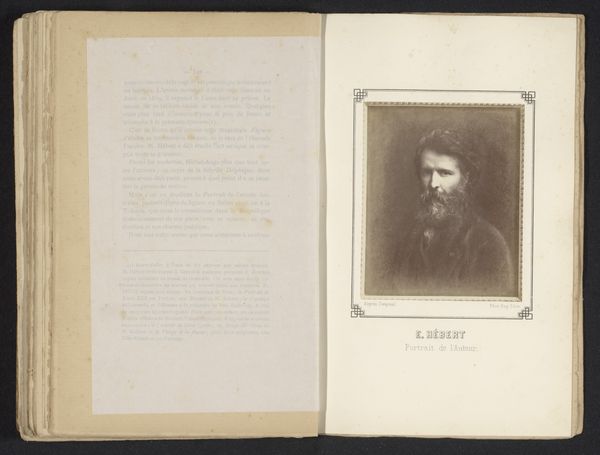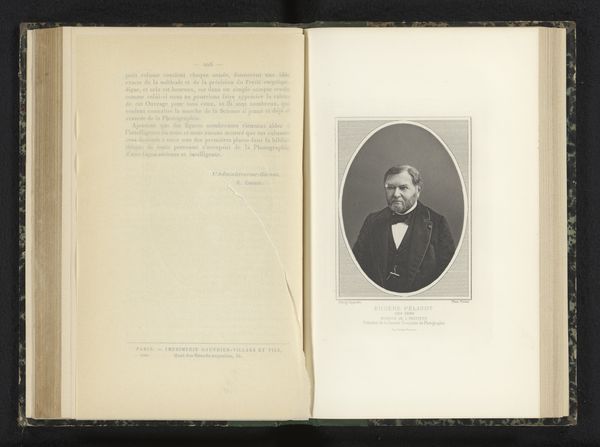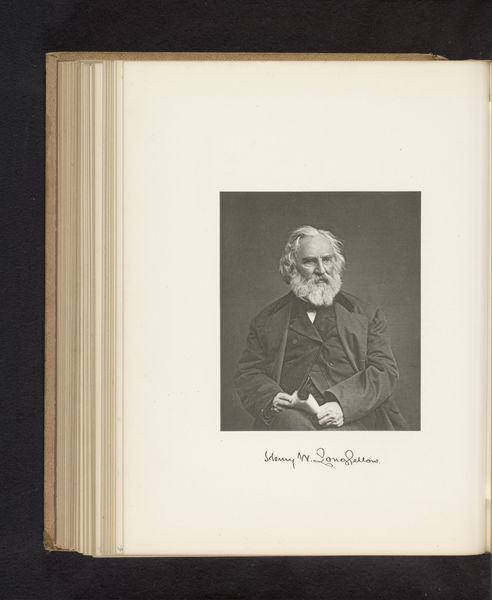
photography, albumen-print
#
portrait
#
photography
#
albumen-print
Dimensions: height 99 mm, width 160 mm
Copyright: Rijks Museum: Open Domain
Curator: We're looking at "Portret van een onbekende man, mogelijk J. Linck," a photographic portrait from before 1892 by S. Linck. Editor: My immediate reaction is to the remarkable tonal range. The greyscale transitions are so delicate, almost painterly for a photograph. It speaks of incredible care in both composition and process. Curator: The portrait format during this era was deeply embedded in social hierarchies. Consider the sitters: often members of the bourgeoisie, positioned to project status and respectability through formal attire and posture. This is also reflected through its very presence within the photo album—serving almost like a family's symbolic capital. Editor: That's interesting, because on the formal level the high collar and tightly buttoned jacket create a vertical linearity echoed by the long beard. He is presented very much framed by geometric severity softened by the flowing hair. The subtle chiaroscuro adds dimension, bringing out character and warmth amid the composition's restraint. Curator: This image may invite a look into 19th-century conceptions of masculinity—what was communicated through dress, facial hair, and demeanor? Were certain forms of dress expected of gentlemen or professionals, reinforcing class distinctions but also internalised self-governance? How much control did this person actually have in its depiction? Editor: Certainly, even in photography of the time, the image remains manipulated through lens, light, and angle, crafting idealization, not absolute accuracy. However, I find beauty here also in this surface examination. The grain, the play of shadow, are intrinsically evocative even if the sitter’s real essence remains just beyond reach. It is within those aesthetic qualities themselves that an alternative, richer understanding opens up. Curator: Thinking about materiality adds another layer. This is an albumen print. What meaning might it carry within its very existence as object? Its vulnerability to light and degradation also represents another form of time acting as cultural intervention beyond just visual perception. The emulsion’s shifting appearance mirrors fluctuating views toward both sitter and art itself over a lifespan that encompasses multiple perspectives. Editor: Indeed. Focusing in tandem allows our interpretations to unfold. Both structure and societal framework converge beautifully, creating an enriched, resonant historical artifact open to future dialogues. Curator: By recognizing social context alongside this beauty, we are encouraged towards interpretations filled with thoughtful compassion, thus ensuring continued discussion even across shifting paradigms!
Comments
No comments
Be the first to comment and join the conversation on the ultimate creative platform.

